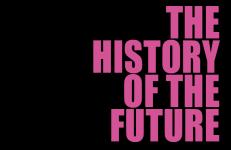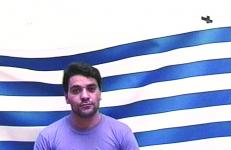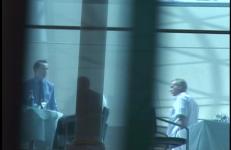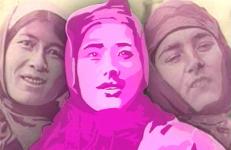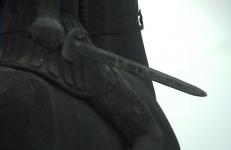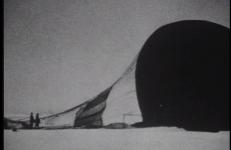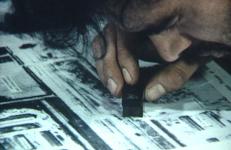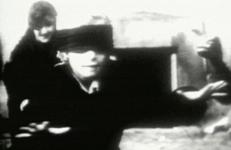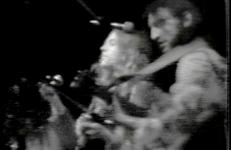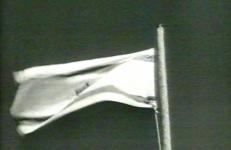Each year, crowds of Turkish, Australian and New Zealander tourists travel to Gallipoli, Turkey for a modern day pilgrimage. They honor their fallen soldiers who lost their lives in the Gallipoli/Çanakkale Campaign—one of the bloodiest conflicts of World War One—, which is considered as a defining moment in the establishment of the Turkish nation state as well as the beginning of national consciousness in Australia and New Zealand. With heightened emotions, they move around the historical battlefields, graves and war monuments with the help of guided tours tailored for each community.
History
A search for a non-existent image, a desire to create an image where there is none,“ leads to Rea Tajiri’s composition on recorded history and non-recorded memory. Framed by the haunting facts of the post-Pearl Harbor Japanese internment camps (which dislocated 120,000 Japanese Americans during World War II), Tajiri creates a version of her family’s story through interviews and historical detail, remembering a time that many people would rather forget.
Welcome to The History of the Future: A Franklin Furnace View of Performance Art. This disc set is based upon a live event that took place at the Abrons Art Center in New York City on April 27, 2007. Within this box set, you'll find performances from that event as well as historical videos that capture the thrills and chills of performance art during the last 30 years.
A desktop video in five parts that modestly propose ways of existing with or against history and politics.
"On my mother’s side there are two lands I come from, separated by the Atlantic ocean, all those fathoms deep. The lands of my grandma and grandpa. I had been through the lands of my grandfather, that is where I still live. The now tamed prairies, missing their bison herds and fenced out into neat geometrical patterns. My grandma comes from a similarly colonized land, Scotland. Ruled by the British Commonwealth and forbidden to speak their language. . . I had never been to Scotland. And I wanted to see my Grandma’s traditional territory.
Hostage: The Bachar Tapes (English Version) is an experimental documentary about "The Western Hostage Crisis." The crisis refers to the abduction and detention of Westerners like Terry Anderson, and Terry Waite in Lebanon in the 80s and early 90s by "Islamic militants." This episode directly and indirectly consumed Lebanese, U.S., French, and British political and public life, and precipitated a number of high-profile political scandals like the Iran-Contra affair in the U.S.
Hostage: The Bachar Tapes (English Version) is an experimental documentary about "The Western Hostage Crisis." The crisis refers to the abduction and detention of Westerners like Terry Anderson, and Terry Waite in Lebanon in the 80s and early 90s by "Islamic militants." This episode directly and indirectly consumed Lebanese, U.S., French, and British political and public life, and precipitated a number of high-profile political scandals like the Iran-Contra affair in the U.S.
How Little We Know of Our Neighbours is an experimental documentary about Britain's Mass Observation Movement and its relationship to contemporary issues regarding surveillance, public self-disclosure, and privacy. At its center is a look at the multiple roles cameras have played in public space, starting in the 1880's, when the introduction of the hand-held camera brought photography out of the studio and into the street. For the first time one could be photographed casually in public without knowledge or consent.
Adapted from psychologist A.R. Luria’s research in the Islamic outskirts of the Soviet Union in the 1930s, How to Fix the World brings to life Luria's conversations with Central Asian farmers learning how to read and write under the unfamiliar principles of Socialism.
Colorful digital animations based on Max Penson's photographs of collective farmers play against a backdrop of landscape images shot in Uzbekistan in 2004.
I Was There is a trilogy of experimental documentary films that explores the problem of radiation, our society's fading collective memory of the atomic bombing of Hiroshima and Nagasaki, and the unresolved debate between ethics and science. These series concern the immediate effects of weaponized nuclear technology, as invisible poison, on the human body.
Newly uncovered 16mm footage from US Army archives recorded the bare land of Hiroshima and the questions of war tactics on the human race immersed in the present time. I Was There is a trilogy of experimental documentary films that explores the problem of radiation, our society's fading collective memory of the atomic bombing and the unresolved debate between ethics and science.
The film reexamines J. Robert Oppenheimer's speech at Princeton Theological Seminary in 1958. I Was There is a trilogy of experimental documentary films that explores the problem of radiation, our society's fading collective memory of the atomic bombing of Hiroshima and Nagasaki, and the unresolved debate between ethics and science. These series concern the immediate effects of weaponized nuclear technology, as invisible poison, on the human body.
This short animation explores various ways to narrate an incident that once took place in the mythical Hotel Carlton. Against images of the deserted hotel today, the artist sketches situations that evoke the rumors that once circulated around the place and the people who inhabited it.
This title is only available on Radical Closure.
"In the guise of chronicling the final moments of three polar explorers marooned on an ice floe a century ago, Baron's film investigates the limitations of images and other forms of record as a means of knowing the past and the paradoxical interplay of film time, historical time, real time and the fixed moment of the photograph. Marrying matter-of-fact voiceover and allusive sound fragments, evidence and illustration, in Baron’s words, "meaning is set adrift"."
--New York Film Festival, 1997, Views from the Avant-Garde program notes
You never thought that Franco-American relations could be so fun! A French thriller in the tradition of the Marquis de Sade, getting it on with Roger Corman's from-the-hip philosophy.
This title is also available on Animal Charm Videoworks: Volume 3, Computer Smarts.
An experimental documentary comprised of regional vignettes about faith, force, technology and exodus. Eleven parables relay histories of settlement, removal, technological breakthrough, violence, messianism and resistance, all occurring somewhere in the state of Illinois. The state is a convenient structural ruse, allowing its histories to become allegories that explore how we’re shaped by conviction and ideology.
The vanishing point of Images of The World is the conceptual image of the 'blind spot' of the evaluators of aerial footage of the IG Farben industrial plant taken by the Americans in 1944. Commentaries and notes on the photographs show that it was only decades later that the CIA noticed what the Allies hadn't wanted to see: that the Auschwitz concentration camp is depicted next to the industrial bombing target.
"It may indeed be questioned whether we have any memories at all from our childhood: memories relating to our childhood may be all that we possess. Our childhood memories show us our earliest years not as they were, but as they appeared at the later periods when the memories were aroused. In these periods of arousal, the childhood memories did not, as people are accustomed to say, emerge; they were formed at that time. And a number of motives, with no concern for historical accuracy, had a part in forming them, as well as in the selection of the memories themselves."
In Dreams and Autumn is a three-channel synchronized video installation. A composite of the three channels presented side by side in one video is available from Video Data Bank for educational use only.
This is the last piece in the constellation of works including Kicking the Clouds, Mnemonics of Shape and Reason, and the text Hello Trouble as well as a series of etched photographs.
In The Blood is an experimental documentary about American-Jewish attitudes towards Germans, and the role the Holocaust plays in shaping Jewish identity. This layered collage combines appropriated images, original footage, sampled sounds, and fragments of audio conversations, to examine perceptions and representations of Germany, cultural identity, collective memory, and history.
Adam Khalil and Zack Khalil’s debut film re-imagines an Anishinaabe story, the Seven Fires Prophecy, which both predates and predicts first contact with Europeans. A kaleidoscopic experience blending documentary, narrative, and experimental forms, INAATE/SE/ explores how the prophecy resonates through the generations in their Indigenous community on the Michigan/Canadian border.
Adam Khalil and Zack Khalil’s debut film re-imagines an Anishinaabe story, the Seven Fires Prophecy, which both predates and predicts first contact with Europeans. A kaleidoscopic experience blending documentary, narrative, and experimental forms, INAATE/SE/ explores how the prophecy resonates through the generations in their Indigenous community on the Michigan/Canadian border.
Shot in December 1969, this video documents a live performance by the Incredible String Band at the Fillmore East, NYC. Beginning with footage of people waiting in line at the doors before the show begins, the video goes on to record the performance itself. Early on, the band experiences some audio problems, before settling down to play. We witness the band talking, tuning their instruments and playing.
When everyone has forgotten the romantic refrains of the Internationale sung in different languages, Pablito, a blue front Amazon parrot, capable of living to 100 years old, will remember. He rings bells and is learning to whistle, hum and sing the Internationale in French, Spanish and German.
With a combination of Hollywood, European, and Israeli film; documentary; news coverage; and excerpts of 'live' footage shot in the West Bank and Gaza strip, Muqaddimah Li-Nihayat Jidal (Introduction to the End of an Argument) critiques representations of the Middle East, Arab culture, and the Palestinian people produced by the West. The video mimics the dominant media's forms of representation, subverting its methodology and construction.






